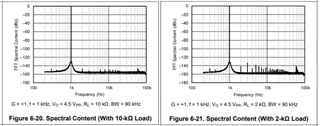Other Parts Discussed in Thread: OPA191, OPA192
Hi,
I read the following documentation, but didn't know which offset correction technology to choose when choosing a device with a low offset.
"Offset Correction Methods: Laser Trim, e-Trim, and Chopper"
https://www.tij.co.jp/jp/lit/an/sbot037c/sbot037c.pdf
Please tell me if there are any points to be aware of when using and selecting Laser Trim, e-Trim, and Chopper.
Thanks,



